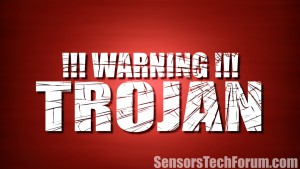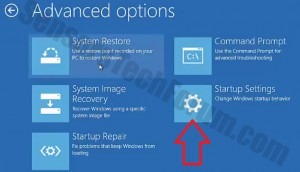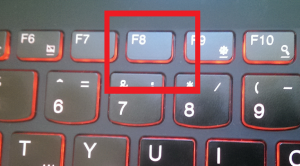| Name | Trojan:Win32/Dorv.B!rfn |
| Type | Trojan Horse |
| Short Description | May download other malware on the computer, collect keystrokes, allow third-party access, generate traffic to other sites and others, control drivers and PC hardware, etc. |
| Symptoms | Unfamiliar processes, PC Slowdowns, Disabled Firewall, etc. |
| Distribution Method | Spam mails. MiTM attacks, malicious redirects. |
| Detection tool | Download Malware Removal Tool, to See If Your System Has Been Affected By Trojan:Win32/Dorv.B!rfn |
 This particular type of trojan is reported by ESG security researchers to distribute mainly via drive-by downloads in the form of Java or Flash Player updates. It could also be embedded with free software downloaded from unfamiliar third parties. It is believed to be used for several different purposes – monitoring the user’s activities, collecting keystrokes and obtaining passwords and download other malware to the infected computer. Most Trojans run active processes in the Windows Task Manager that are hidden from the user. Experts advise to take immediately measures in case you believe you have a trojan horse in your machine since it becomes utterly defenseless.
This particular type of trojan is reported by ESG security researchers to distribute mainly via drive-by downloads in the form of Java or Flash Player updates. It could also be embedded with free software downloaded from unfamiliar third parties. It is believed to be used for several different purposes – monitoring the user’s activities, collecting keystrokes and obtaining passwords and download other malware to the infected computer. Most Trojans run active processes in the Windows Task Manager that are hidden from the user. Experts advise to take immediately measures in case you believe you have a trojan horse in your machine since it becomes utterly defenseless.
Trojan:Win32/Dorv.B!rfn – How Did I Get Infected With?
This particular type of malware may affect user PCs via several different ways. One of them is via massive spam mail campaigns that contain infected attachments in them. Another method of infection is by being redirected to a malicious web link in case you have an installed ad-supported application or any similar PUP (Potentially Unwanted Program) on your computer. PUPs may be indirectly dangerous, and they install themselves on users’ PCs in the background of the setup programs of third-party downloaded freeware. Third-party software providers may bundle software for profits and they usually write it down in their EULA agreements. In order to quickly find bundled applications in third-party installers, it is advisable to check license agreements with particular checking software, like EULAlyzer, for example.
More About Trojan:Win32/Dorv.B!rfn
This trojan is reported by security investigators to focus on the %temp% folder, creating files there with the purpose of evading security scans. Although it is not confirmed the Trojan may use process migration to deceive antivirus programs that they have eliminated it, while in reality it may only transfer the malicious process to another concealed file within your hard drive.
This Trojan is believed to install dangerous ransomware, like CryptoWall to encrypt user data and extort victims for funds. It is also supposed to disable all firewalls in the affected machine with the sole purpose of allowing other parties to access the computer from a distance. More to it than that it may use mechanisms that enable it to generate traffic to other websites, mainly for the purpose of profit making.
Also, this Trojan may assume partial control over the PC hardware, like web camera, cd/DVD player, keyboard, mouse control and others. Experts strongly advise downloading an anti-malware tool in case you believe you have the threat because you may become an unsuspecting accomplice to this vile threat and may endanger other devices.
Removing Trojan:Win32/Dorv.B!rfn
Deleting this Trojan in full may be a bit more complicated task. The trick is to catch the threat in time, before it has downloaded other malicious files on the computer, like a rootkit virus for example. It is highly recommended to backup your data and reinstall you Windows completely in case you cannot establish for how long you have had this threat present. After that you should employ an external firewall to double your protection like ZoneAlarm and an updated anti-malware program that will both assist in the fast detection of any new threats on your computer.
In case you do not or cannot reinstall your operating system, it is advisable to follow the step-by-step instructions below to successfully elicit the threat from your machine.
1. Start Your PC in Safe Mode to Remove Trojan:Win32/Dorv.B!rfn.
For Windows XP, Vista, 7 systems:
1. Remove all CDs and DVDs, and then Restart your PC from the “Start” menu.
2. Select one of the two options provided below:
– For PCs with a single operating system: Press “F8” repeatedly after the first boot screen shows up during the restart of your computer. In case the Windows logo appears on the screen, you have to repeat the same task again.
– For PCs with multiple operating systems: Тhe arrow keys will help you select the operating system you prefer to start in Safe Mode. Press “F8” just as described for a single operating system.
3. As the “Advanced Boot Options” screen appears, select the Safe Mode option you want using the arrow keys. As you make your selection, press “Enter“.
4. Log on to your computer using your administrator account
While your computer is in Safe Mode, the words “Safe Mode” will appear in all four corners of your screen.
For Windows 8, 8.1 and 10 systems:
Step 1: Open the Start Menu

Step 2: Whilst holding down Shift button, click on Power and then click on Restart.
Step 3: After reboot, the aftermentioned menu will appear. From there you should choose Troubleshoot.

Step 4: You will see the Troubleshoot menu. From this menu you can choose Advanced Options.

Step 5: After the Advanced Options menu appears, click on Startup Settings.

Step 6: Click on Restart.

Step 7: A menu will appear upon reboot. You should choose Safe Mode by pressing its corresponding number and the machine will restart.
2. Remove Trojan:Win32/Dorv.B!rfn automatically by downloading an advanced anti-malware program.
To clean your computer you must download an updated anti-malware program on a safe PC and then install it on the affected computer in offline mode. After that you should boot into safe mode and scan your computer to remove all Trojan:Win32/Dorv.B!rfn associated objects.
Preparation before removing Trojan:Win32/Dorv.B!rfn.
Before starting the actual removal process, we recommend that you do the following preparation steps.
- Make sure you have these instructions always open and in front of your eyes.
- Do a backup of all of your files, even if they could be damaged. You should back up your data with a cloud backup solution and insure your files against any type of loss, even from the most severe threats.
- Be patient as this could take a while.
- Scan for Malware
- Fix Registries
- Remove Virus Files
Step 1: Scan for Trojan:Win32/Dorv.B!rfn with SpyHunter Anti-Malware Tool



Step 2: Clean any registries, created by Trojan:Win32/Dorv.B!rfn on your computer.
The usually targeted registries of Windows machines are the following:
- HKEY_LOCAL_MACHINE\Software\Microsoft\Windows\CurrentVersion\Run
- HKEY_CURRENT_USER\Software\Microsoft\Windows\CurrentVersion\Run
- HKEY_LOCAL_MACHINE\Software\Microsoft\Windows\CurrentVersion\RunOnce
- HKEY_CURRENT_USER\Software\Microsoft\Windows\CurrentVersion\RunOnce
You can access them by opening the Windows registry editor and deleting any values, created by Trojan:Win32/Dorv.B!rfn there. This can happen by following the steps underneath:


 Tip: To find a virus-created value, you can right-click on it and click "Modify" to see which file it is set to run. If this is the virus file location, remove the value.
Tip: To find a virus-created value, you can right-click on it and click "Modify" to see which file it is set to run. If this is the virus file location, remove the value.Step 3: Find virus files created by Trojan:Win32/Dorv.B!rfn on your PC.
1.For Windows 8, 8.1 and 10.
For Newer Windows Operating Systems
1: On your keyboard press + R and write explorer.exe in the Run text box and then click on the Ok button.

2: Click on your PC from the quick access bar. This is usually an icon with a monitor and its name is either “My Computer”, “My PC” or “This PC” or whatever you have named it.

3: Navigate to the search box in the top-right of your PC's screen and type “fileextension:” and after which type the file extension. If you are looking for malicious executables, an example may be "fileextension:exe". After doing that, leave a space and type the file name you believe the malware has created. Here is how it may appear if your file has been found:

N.B. We recommend to wait for the green loading bar in the navigation box to fill up in case the PC is looking for the file and hasn't found it yet.
2.For Windows XP, Vista, and 7.
For Older Windows Operating Systems
In older Windows OS's the conventional approach should be the effective one:
1: Click on the Start Menu icon (usually on your bottom-left) and then choose the Search preference.

2: After the search window appears, choose More Advanced Options from the search assistant box. Another way is by clicking on All Files and Folders.

3: After that type the name of the file you are looking for and click on the Search button. This might take some time after which results will appear. If you have found the malicious file, you may copy or open its location by right-clicking on it.
Now you should be able to discover any file on Windows as long as it is on your hard drive and is not concealed via special software.
Trojan:Win32/Dorv.B!rfn FAQ
What Does Trojan:Win32/Dorv.B!rfn Trojan Do?
The Trojan:Win32/Dorv.B!rfn Trojan is a malicious computer program designed to disrupt, damage, or gain unauthorized access to a computer system. It can be used to steal sensitive data, gain control over a system, or launch other malicious activities.
Can Trojans Steal Passwords?
Yes, Trojans, like Trojan:Win32/Dorv.B!rfn, can steal passwords. These malicious programs are designed to gain access to a user's computer, spy on victims and steal sensitive information such as banking details and passwords.
Can Trojan:Win32/Dorv.B!rfn Trojan Hide Itself?
Yes, it can. A Trojan can use various techniques to mask itself, including rootkits, encryption, and obfuscation, to hide from security scanners and evade detection.
Can a Trojan be Removed by Factory Reset?
Yes, a Trojan can be removed by factory resetting your device. This is because it will restore the device to its original state, eliminating any malicious software that may have been installed. Bear in mind that there are more sophisticated Trojans that leave backdoors and reinfect even after a factory reset.
Can Trojan:Win32/Dorv.B!rfn Trojan Infect WiFi?
Yes, it is possible for a Trojan to infect WiFi networks. When a user connects to the infected network, the Trojan can spread to other connected devices and can access sensitive information on the network.
Can Trojans Be Deleted?
Yes, Trojans can be deleted. This is typically done by running a powerful anti-virus or anti-malware program that is designed to detect and remove malicious files. In some cases, manual deletion of the Trojan may also be necessary.
Can Trojans Steal Files?
Yes, Trojans can steal files if they are installed on a computer. This is done by allowing the malware author or user to gain access to the computer and then steal the files stored on it.
Which Anti-Malware Can Remove Trojans?
Anti-malware programs such as SpyHunter are capable of scanning for and removing Trojans from your computer. It is important to keep your anti-malware up to date and regularly scan your system for any malicious software.
Can Trojans Infect USB?
Yes, Trojans can infect USB devices. USB Trojans typically spread through malicious files downloaded from the internet or shared via email, allowing the hacker to gain access to a user's confidential data.
About the Trojan:Win32/Dorv.B!rfn Research
The content we publish on SensorsTechForum.com, this Trojan:Win32/Dorv.B!rfn how-to removal guide included, is the outcome of extensive research, hard work and our team’s devotion to help you remove the specific trojan problem.
How did we conduct the research on Trojan:Win32/Dorv.B!rfn?
Please note that our research is based on an independent investigation. We are in contact with independent security researchers, thanks to which we receive daily updates on the latest malware definitions, including the various types of trojans (backdoor, downloader, infostealer, ransom, etc.)
Furthermore, the research behind the Trojan:Win32/Dorv.B!rfn threat is backed with VirusTotal.
To better understand the threat posed by trojans, please refer to the following articles which provide knowledgeable details.




